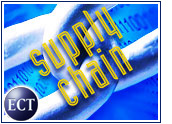
Just over a year ago, business-to-business (B2B) e-commercewas all the rage. So, what happened?
According to a report released by GartnerG2, movingbusiness processes online turned out to be harderthan it seemed initially.
Creating and implementing the technology needed for B2B e-commerce was the easypart. The difficult element of the equation was movingthe buyer-supplier relationship onto the Web.
Snafus and Holdups
Since the beginning of the Internet boom, some business-to-consumer (B2C)e-tailers have managed to gain consumer trust andbreak away from the pack. But according to GartnerG2analyst Gale Daikoku, developing a relationship withpotential customers is more complicated for B2B companies.
In addition, many B2B companies discovered that therewas no money in transaction-based e-marketplaces, sothey are now refocusing their business plans on developingsoftware and infrastructure.
B2B also has been hampered by a lack of industrystandardization for e-commerce technology, and globalB2B has been impeded by disparate languages, taxes andcurrencies.
Different Interests
Yet another problem that has plagued B2B is what Giga InformationGroup analyst Andrew Bartels calls an “asymmetryof interests.”
Large companies have been veryinterested in B2B e-commerce because of potentialcost savings, he said, but small and mid-sized companies havebeen reluctant to go online because they have fewer resources and tend to be more conservative.
Asymmetry also exists between buyers and sellers, he noted.Whereas buyers are in favor of using the Web for salestransactions, sellers are worried that B2Be-commerce will force them to compete purely on thebasis of price.
“Small companies know they do not have the scale to bethe low-cost provider — they focus on better service,quality and reliability,” Bartels told the E-Commerce Times.
“They are afraid that as their larger brethren start buying online aggressively … the sellers will be forced to play a price competitiongame and lose.”
B2B Comeback
According to Bartels, in order for B2B to rise again,three things need to happen. First, the cost of entrymust come down through the revival of the ASP(application service provider) model.
Because companies must wait a year or two to receivetheir money under the ASP model, when investorsstarted looking for immediate profits, a lot of ASPswent back to licensing in order to get their money upfront, Bartels said.
A return to ASPs, which haveexpertise and credibility in outsourcing, willbring down the price of B2B e-commerce.
“Another factor is that while suppliers are nervousabout selling online, pressure from buyers willincreasingly force them to,” Bartels said.
Last, there must be a shift from onlinetransactions to online collaboration — includingplanning, product development and marketing — whichwill create more incentives for sellers to use the Web.
Natural Cycle
Although B2B e-commerce has had difficulty overcoming a number of obstacles, it also has slowed down aspart of a natural cycle, according to GartnerG2. Whenthe dot-com phenomenon began, there was a huge surgeof what turned out to be unrealistic expectations forB2B, which peaked in 1999 and 2000.
Expectations later fell to earth, and in early 2001, B2B entered what GartnerG2 called the “trough of disillusionment.”The situation was further aggravated by the September 11th attacks and the resulting slowdown in the economy.
But just because B2B has fallen short of the hype that surrounded it does not mean it is dead. “It seems like it failednow, but a lot of innovation is happening today behindthe scenes,” Daikoku told the E-Commerce Times.
Bartels agreed, saying, “Large companies have been doing lots of stuff electronically for a long time. It’s not as visiblebecause it’s often one company to another, but it’s there.”
GartnerG2 still expects B2B e-commerce to reach US$8.5trillion by 2005, up from $433 billion in 2000, butDaikoku said she expects it will take five to 10 yearsfor B2B to hit its stride.

















































B2B went bust because exchanges had no liquidity, i.e., no participation. There was no participation because there was no utility. When there is vertical integration of data to the retail end, to the smaller shops, there will be great utility.
If I run a retail shop selling, e.g., carpet, there will be utility in examining catalogs online, purchasing online, receiving ship notices and order confirmations online, and integrating that data with accounts receivable, inventory, etc. automatically, that will be utility.
Where is the Bone?
B2B companies have been changing their Vision of what B2B should be and have confused the corporates. I do not blame the B2B companies, they had to make short-term profits and hence they did it.
For any company, show them the bone or opportunity, then all things like technology, standards, etc. fall in place.
If eBay could successfully run a marketplace in B2C2C space, making all its stakeholders happy, I AM sure there are many B2B marketplaces like Ariba or C1 who are making their stakeholders happy, but the problem is that there are too many of them in the B2B space hence….none of them are happy
A fundamental mistake impeding the uptake of B2B is the attempt by technology providers to re-invent traditional relationships.
The engine of a car is at the front because that is where the horses once stood and it is where the user wants it to be, not because it is the best place for the engine.
Traditionally suppliers have managed the process of preparing, pricing and distributing catalogues or other marketing material. Technology attempted to move that responsibility to buyers. Neither buyers nor suppliers like the change. Buyers do not want the additional workload and suppliers want to be able to market their products.
If technology enabled the traditional roles instead of reinventing them, B2B could explode in a much shorter time frame.
The problem with B2B is that the buyers and sellers want two different systems. Who do you charge? The sellers are always trying to make the buyers happy, What system is compatible with the buyer’s current system? If you create the buyer’s side, than the sellers have multiple different systems to buy into. The large retailers or buyers have and always will make the buyer do what they want. B2B will be successful when the two groups decide that they are on the same side, to get products to the consumer as fast as possible. The other major breakthrough that will happen is when the B2Bs are compatible with one another. Than there will be no choice but to help each other in the supply chain.
I think that all the points of view of this story are obvious, this guy is repeating the same history that he had heard before, it is not original.
Almost all these consultant guys are like parrots, one day, one of them said something interesting and the rest of them repeated the same phrase until the end of the world.
And the price for hearing the opinion of these people is 1000$ per hour.
The use of the internet for transactions was ahead of its generation. As decision makers are replaced with the generation that grew up with the internet in everyday life, then all areas will improve. There are still very traditional people running the supplier/manufacturing corporations. Once the internet generation replaces them in 5-10 years, the mental barrier inevitably will be removed.
You all just don’t get it! E-commerce is just another tactic at a ‘snail-mail based’
catalog revenue model. Nothing is being invented here, with the exception of software.
The way of conducting business is exactly the same. The customer peruses a product offering,
selects some merchandise, pays for it, and then it is shipped (and possibly returned).
The catalogers have been doing that since the mail was invented. Big Deal!
There are only two winners to e-commerce (as it is currently defined) where product can
be shipped electronically and where the product is truly unique and not easily obtainable.
Porn, data, and that wonderful sauce only made in Poughkeepsie all apply. The rest of you
guys call JC Penney and find out how they do it.
Robert
P.S. I don’t consider eBay e-commerce. They are only providing a platform, they are not
moving product themselves.